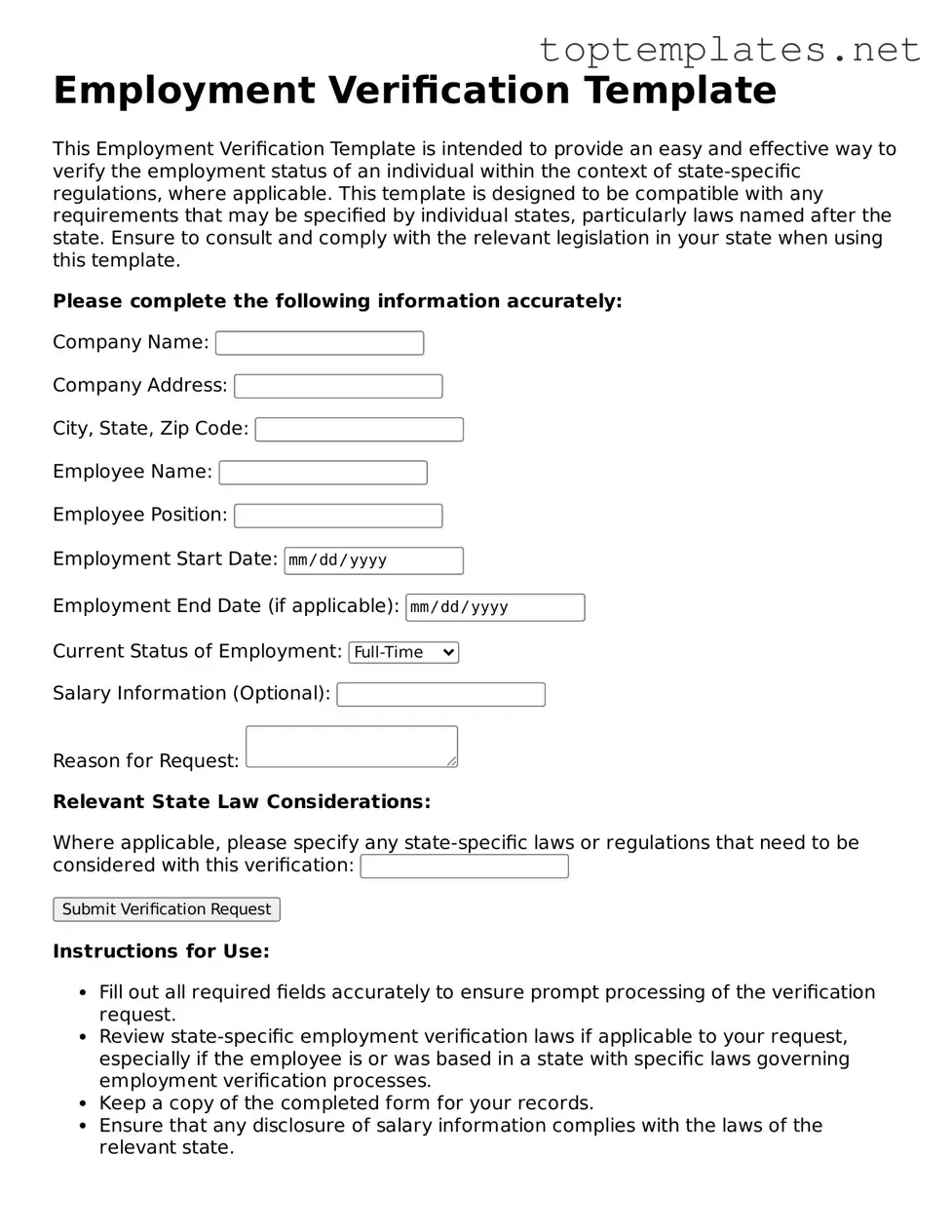What is an Employment Verification form?
An Employment Verification form is a document used by employers to verify the employment status of current or former employees. It typically includes information such as dates of employment, positions held, and sometimes salary information.
Who needs to fill out an Employment Verification form?
This form is usually filled out by a current or former employer at the request of an employee. The request often comes from prospective employers, lenders, or government agencies.
How can I request an Employment Verification form?
Employees needing verification can request their employer or HR department to fill out the form. Requests might also come from third parties, in which case authorization from the employee is generally required.
What information is needed to complete the Employment Verification form?
To complete this form, details such as the employee's full name, dates of employment, job title, and sometimes salary information are required. The employer may also need to verify the reason for the request and the employee's consent if applicable.
Is my salary information shared on the Employment Verification form?
Salary information may be included on the form if it is relevant to the verification request and if the employee has given consent for this information to be shared.
How long does the verification process take?
The time it takes to complete the verification process can vary. It depends on the employer's policy, the availability of the HR department or manager responsible for completing the form, and the specific details being verified.
What if my employer refuses to fill out the Employment Verification form?
If an employer refuses to complete the form, you might consider providing alternative proof of employment to the requesting party, such as pay stubs or a letter of employment. Some employers also use third-party verification services that can be indicated to the requester.
